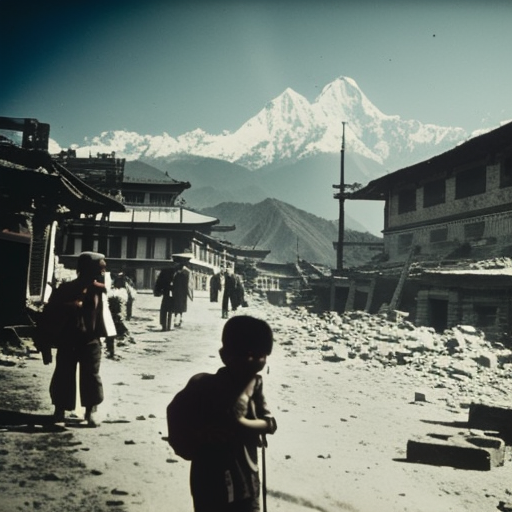Summary:
The April 2015 Nepal earthquake, also known as the Gorkha earthquake, was a devastating natural disaster that struck Nepal on April 25, 2015. With a magnitude of 7.8, the earthquake caused widespread destruction, resulting in the loss of thousands of lives, displacement of millions, and significant damage to infrastructure and cultural heritage sites.
Background:
Nepal is located in a seismically active region, making it prone to earthquakes. The country sits on the boundary of two tectonic plates, the Indian Plate and the Eurasian Plate, which constantly collide. This collision has led to the formation of the Himalayan mountain range and frequent seismic activity.
The Earthquake:
On April 25, 2015, at 11:56 a.m. local time, a powerful earthquake struck Nepal. The epicenter was located in the Gorkha district, approximately 80 kilometers northwest of Kathmandu, the capital city. The earthquake lasted for about 50 seconds, causing intense shaking and widespread panic.
Impact:
The earthquake had a devastating impact on Nepal. It resulted in the loss of over 8,000 lives and injured more than 22,000 people. The destruction was widespread, with buildings, homes, and infrastructure collapsing in many areas. The historic city of Bhaktapur, a UNESCO World Heritage Site, suffered significant damage, as did numerous other cultural heritage sites across the country.
Response and Relief Efforts:
The Nepalese government, along with international organizations and neighboring countries, launched immediate relief efforts to assist the affected population. Rescue teams were deployed to search for survivors and provide medical assistance. Emergency shelters were set up to accommodate those who had lost their homes.
International Aid:
The international community rallied to support Nepal in its time of need. Many countries sent rescue teams, medical personnel, and supplies to assist with the relief efforts. Financial aid was also provided to help rebuild the country and support the affected population.
Reconstruction and Recovery:
Rebuilding Nepal after the earthquake was a massive undertaking. The government, with the support of international organizations, focused on reconstructing damaged infrastructure, including roads, schools, and hospitals. Efforts were also made to restore cultural heritage sites and promote tourism, which plays a significant role in Nepal’s economy.
Lessons Learned:
The earthquake highlighted the need for better disaster preparedness and infrastructure resilience in Nepal. The government and international organizations have since worked to improve early warning systems, strengthen building codes, and increase public awareness about earthquake safety.
Conclusion:
The April 2015 Nepal earthquake was a catastrophic event that caused immense loss of life and widespread destruction. The response and relief efforts from both the Nepalese government and the international community were crucial in providing immediate assistance to the affected population. The process of reconstruction and recovery continues to this day, with a focus on building a more resilient Nepal that is better prepared to withstand future seismic events.












